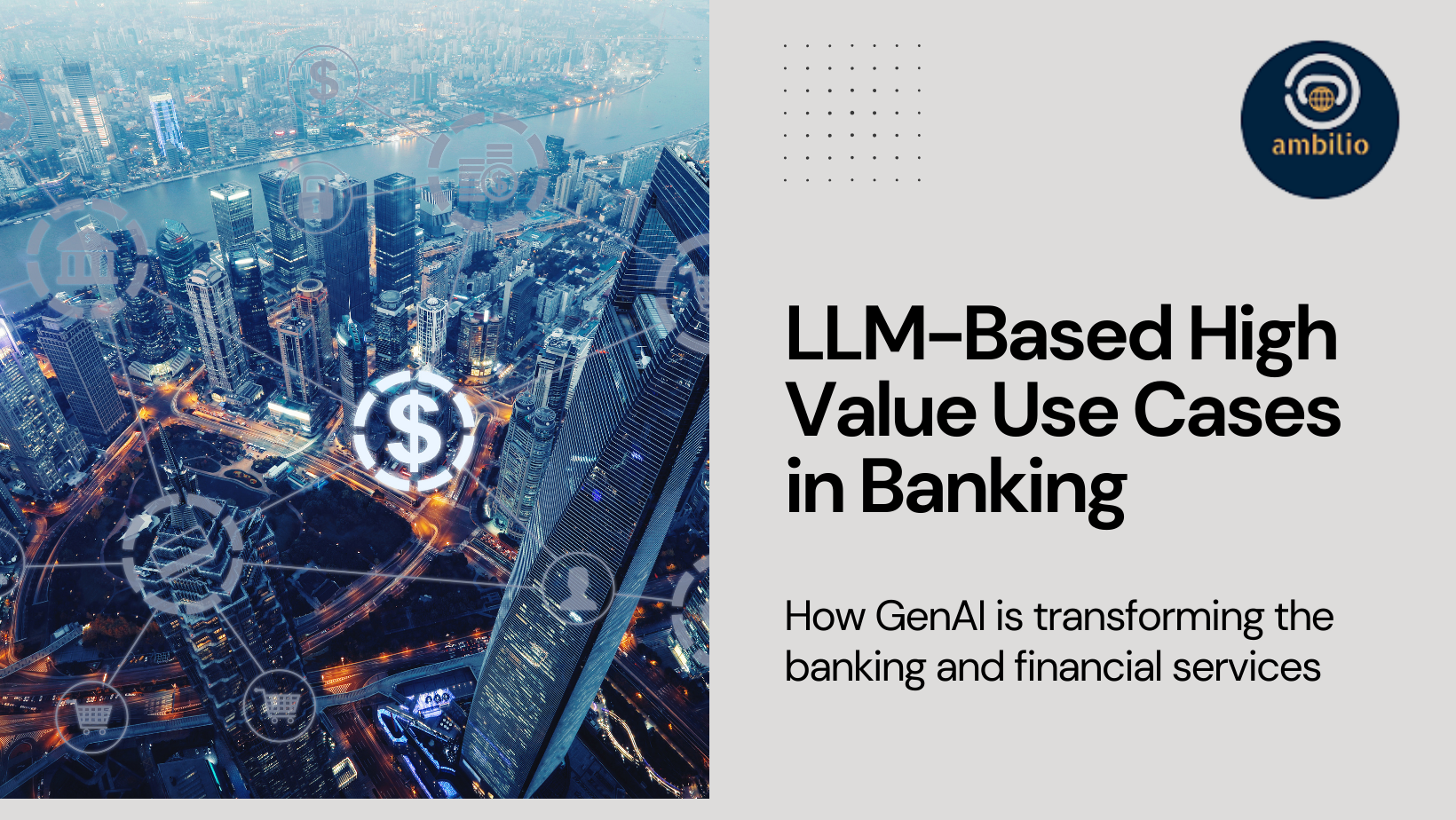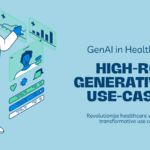In the rapidly evolving landscape of banking and financial services, leveraging Large Language Models (LLMs) such as GPT-4 or LLaMA can revolutionize operations, enhance customer experiences, and drive substantial business value. Here are five high-value use cases illustrating the transformative potential of LLM in Banking and Financial Services.
1. Intelligent Customer Support and Query Resolution:
Implementation: Implement an AI-powered customer support system utilizing an LLM like LLaMA. Customers can interact naturally, asking questions and seeking assistance through various channels like chatbots or voice interfaces.
How it Works: The LLM processes customer queries, understanding intent, and retrieving relevant information from the bank’s knowledge base. It provides accurate, personalized responses, resolves issues, and navigates complex banking inquiries efficiently.
Benefits: This approach streamlines customer support, reducing wait times and human resource costs. The system’s accuracy and round-the-clock availability improve customer satisfaction, retention rates, and overall brand reputation.
High-Value ROI: By automating a significant portion of customer queries, the bank can realize substantial cost savings in operational expenses while witnessing higher customer loyalty and retention rates.
2. Personalized Financial Advice and Recommendations:
Implementation: Develop an LLM-powered financial advisory platform, integrating with customers’ accounts and transaction histories. The model, based on GPT-4 or LLaMA, offers personalized financial advice and investment recommendations.
How it Works: The LLM analyzes transactional patterns, customer goals, risk profiles, and market trends to suggest tailored investment strategies and financial products. It provides real-time advice on budgeting, saving goals, and optimal investment choices.
Benefits: Customers receive personalized financial guidance, fostering trust and loyalty. The bank can cross-sell relevant financial products, leading to increased assets under management (AUM) and higher customer lifetime value.
High-Value ROI: This personalized approach enhances customer engagement, potentially boosting AUM and revenues. Additionally, by recommending suitable products, the bank can increase conversion rates and overall profitability.
3. Compliance and Regulatory Reporting Automation:
Implementation: Employ an LLM to automate compliance and regulatory reporting tasks. The model ensures adherence to complex regulatory frameworks by interpreting and analyzing legal documents, regulatory changes, and internal policies.
How it Works: The LLM interprets regulatory texts, identifies compliance requirements, and automatically generates reports. It ensures accuracy and timeliness in meeting compliance deadlines, reducing human error and mitigating regulatory risks.
Benefits: Streamlined compliance processes lead to reduced operational risks and potential penalties. Automation frees up compliance teams to focus on higher-value tasks and strategic initiatives.
High-Value ROI: The reduction in compliance-related errors and fines significantly lowers operational costs and potential legal liabilities. Moreover, faster and accurate reporting enhances the bank’s reputation and trust among stakeholders.
4.Automated Application Processing for Enhanced Decision-Making:
Implementation: Deploy an LLM-powered automated application processing system to streamline loan, credit card, and account opening procedures.
How it Works: The LLM, based on GPT-4 or LLaMA, ingests and processes incoming applications, extracting relevant information, verifying documents, and assessing eligibility criteria. It applies predefined rules, analyzes historical data, and benchmarks against risk models to make informed decisions.
Benefits: The automated system accelerates application processing times, providing faster responses to customers. It minimizes manual errors, ensures consistency in decision-making, and offers transparency throughout the process.
High-Value ROI: Streamlining application processing reduces operational costs associated with manual review processes, significantly improving efficiency. The quicker turnaround time enhances customer satisfaction, increasing the likelihood of retaining existing customers and attracting new ones. Additionally, efficient decision-making positively impacts the bank’s bottom line by optimizing resource allocation and reducing risk exposure.
5. Automated Credit Underwriting and Risk Assessment:
Implementation: Develop an LLM-based credit underwriting system to automate loan processing and risk assessment.
How it Works: The LLM analyzes borrower profiles, credit histories, financial statements, and market trends to evaluate creditworthiness. It assesses risk factors, determines loan eligibility, and recommends suitable interest rates and terms.
Benefits: Accelerated loan processing times and accurate risk assessment improve operational efficiency and reduce manual errors. It enables the bank to make data-driven lending decisions and offer better-tailored financial products.
High-Value ROI: Automation in credit underwriting streamlines processes, reducing costs associated with manual assessments and potentially increasing the loan approval rate. Moreover, minimizing credit risks positively impacts the bank’s asset quality and profitability.
In conclusion, integrating Large Language Models like GPT-4 or LLaMA in banking and financial services unlocks significant value by enhancing customer experiences, improving operational efficiency, mitigating risks, and optimizing decision-making processes. These high-value use cases not only streamline operations but also elevate the bank’s competitiveness, driving tangible returns on investment and fostering long-term growth and sustainability.



